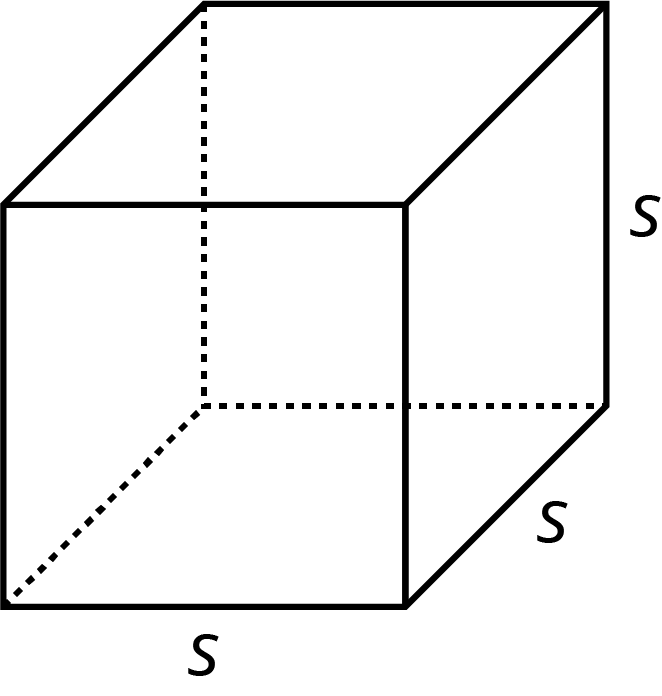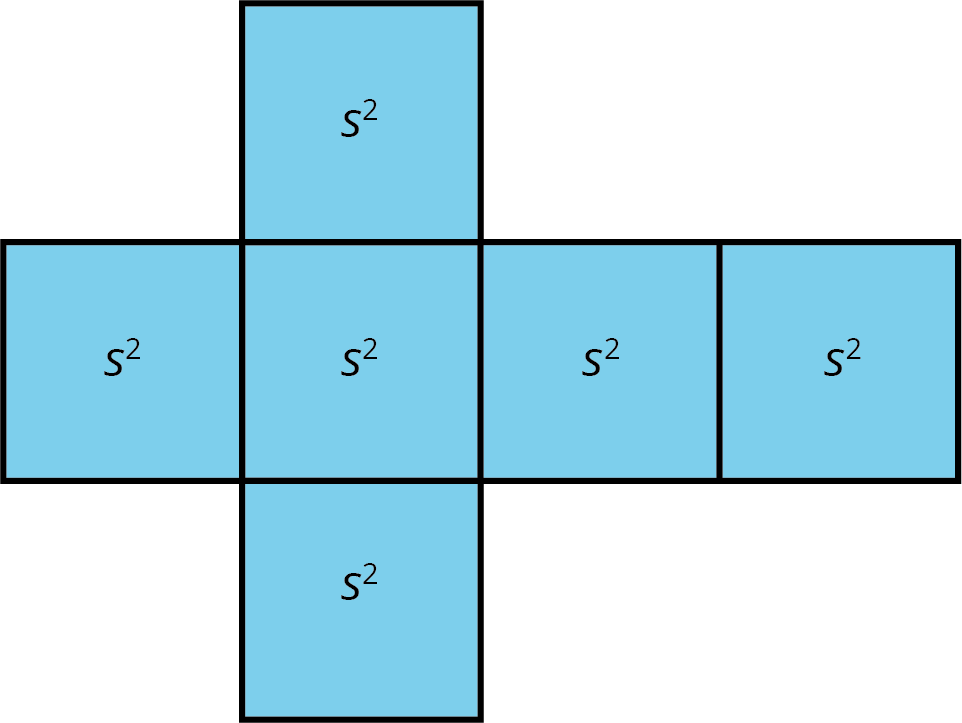Lesson 12
Surface Area of a Cube
Let’s write a formula to find the surface area of a cube.
12.1: Exponent Review
Select the greater expression of each pair without calculating the value of each expression. Be prepared to explain your choices.
- \(10 \boldcdot 3\) or \(10^3\)
- \(13^2\) or \(12 \boldcdot 12\)
- \(97+97+97+97+97+97\) or \(5 \boldcdot 97\)
12.2: The Net of a Cube
-
A cube has edge length 5 inches.
-
Draw a net for this cube, and label its sides with measurements.
- What is the shape of each face?
- What is the area of each face?
- What is the surface area of this cube?
- What is the volume of this cube?
-
-
A second cube has edge length 17 units.
-
Draw a net for this cube, and label its sides with measurements.
- Explain why the area of each face of this cube is \(17^2\) square units.
- Write an expression for the surface area, in square units.
- Write an expression for the volume, in cubic units.
-
12.3: Every Cube in the Whole World
A cube has edge length \(s\).
- Draw a net for the cube.
- Write an expression for the area of each face. Label each face with its area.
- Write an expression for the surface area.
- Write an expression for the volume.
Summary
The volume of a cube with edge length \(s\) is \(s^3\).

A cube has 6 faces that are all identical squares. The surface area of a cube with edge length \(s\) is \(6 \boldcdot s^2\).

Glossary Entries
- cubed
We use the word cubed to mean “to the third power.” This is because a cube with side length \(s\) has a volume of \(s \boldcdot s \boldcdot s\), or \(s^3\).
- exponent
In expressions like \(5^3\) and \(8^2\), the 3 and the 2 are called exponents. They tell you how many factors to multiply. For example, \(5^3\) = \(5 \boldcdot 5 \boldcdot 5\), and \(8^2 = 8 \boldcdot 8\).
- squared
We use the word squared to mean “to the second power.” This is because a square with side length \(s\) has an area of \(s \boldcdot s\), or \(s^2\).